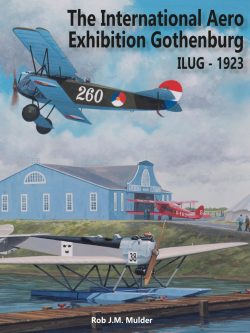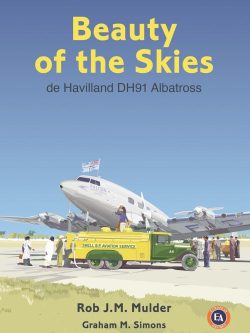Author: Lennart Andersson, Günter Endres and Rob J.M. Mulder
Format: 21.6 x 27.9 cm, hardback, 196 pages, 215 b/w and colour photos, many tables and full production list, scale drawings, colour section with profiles and philately appendix
ISBN: 978-0-9573744-2-3
Non.-Norwegian residents: we advise you strongly to order your book on: www.eambooks.com/Orders.html
The tremendous success of the single-engined F 13, which could be seen at work in all parts of the world in the years after the First World War, encouraged Professor Junkers to take the next step in the evolution of the all-metal, low-wing cantilever monoplane. This was largely driven by the demand for more comfort, capacity, speed and range and, particularly in Germany, the relaxation of the onerous Allied restriction, which had limited aircraft design parameters since the ratification of the Versailles Peace Treaty in 1920.
Missing out twin-engined configurations for airliners, Junkers plumped straight for three engines in the nin-passenger G 24, which was also produced as a bomber designated K 30. With 90 produced in both models, together with another 13 of the larger G 31, all three types were hampered ny shortcomings in engine design, and success was hard won.
This is the third book of themost notable and widely-used of the all-metal aircraft produced by the Junkers works in Dessau in the inter-war years. The authors have again drawn on official documentation and their own painstaking research over four decades to produce, within its covers, a wealth of facts and figures, stories, photographs and colour drawings that should appeal to all historians and serious enthusiasts alike.
List of contents
Introduction
Design and Production – A leap into the unknown
Bomber Development – Search for a compromise
The Larger G 31 – Few in number, big reputation
Home Market – Leading the way
Flight into Uncharted Territory – A challenge met
Secret Experiments – Circumventing restrictions
Red Bombers – Meeting tough requirements
Northern Flight – Partnerships for success
Alpine High-flyers – Up and away
Iberian Experiment – A changing landscape
Flying East – A sluggish start
Southern Cone – Accessing a difficult market
Gold Rush – Supply line without equal
Appendices
G 24/K 30 Production – Three-engined pioneers
G 31 Production – A place in history
G 24/K 30/G 31 Operators – A wide distribution
Performance Parameters – Stepping stone to success
G 24/K 30 World Records – Far and fast
G 24/K 30/G 31 Airmail – Stamp of Distinction
Identification – Flying colours (Colour profiles)








